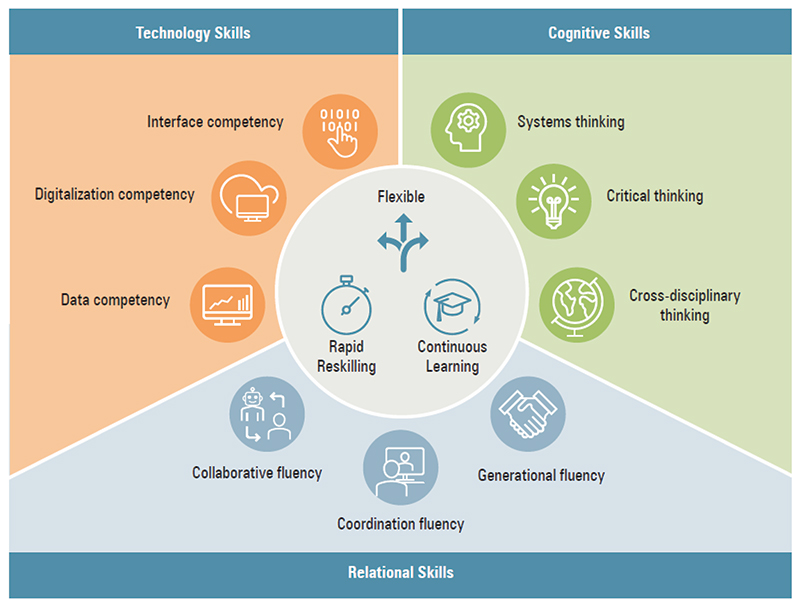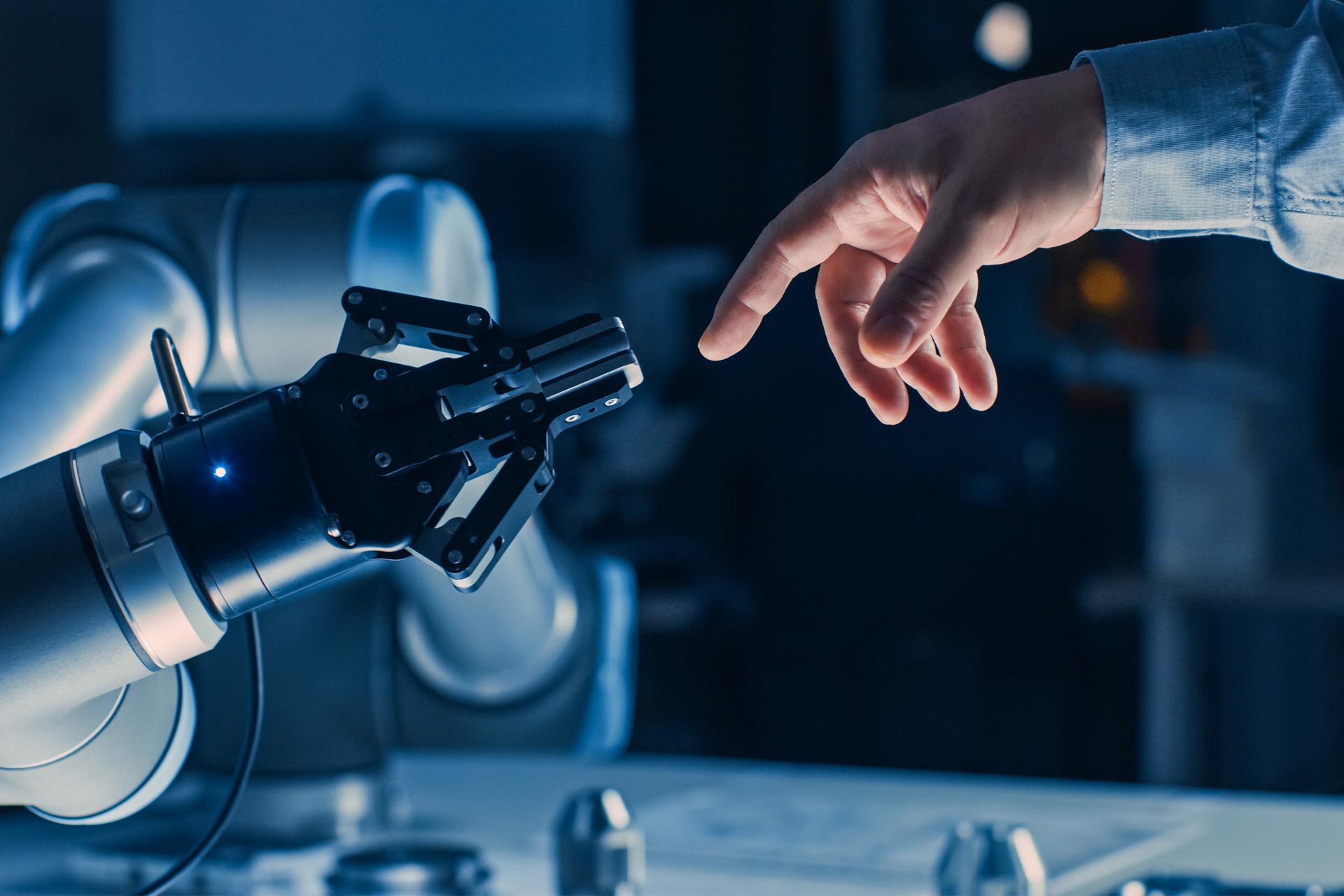In 2018, a painting entitled “Portrait of Edmond de Belamy” was sold at auction for close to half a million dollars. At first glance, there was nothing that made this particular piece stand out from the rest of the lot, which included works by Andy Warhol, Jeff Koons and Banksy. But a closer look at the artist’s signature (an algebraic formula) revealed what made this painting so unique and valuable – it had been created by artificial intelligence after being fed over 15,000 art images dating from the Renaissance to today. The auctioneer’s dropping hammer on the machine-generated painting confirmed that the fourth industrial revolution is already well underway.
A number of nascent technologies, such as smart sensors, machine learning, augmented reality and blockchain, are rapidly converging. At the center of this discussion lies the question of whether the fourth industrial revolution will have created or destroyed more jobs. This issue may appear less relevant to Montanans, given the state’s preponderance of the agriculture, timber and tourism sectors. Yet, it is imperative that we aren’t misled by the “future of work” moniker, putting off till tomorrow what should be addressed today. Rather, we would be wise to heed the words of novelist William Gibson, who coined the term “cyberspace” nearly 40 years ago: “The future is already here – it’s just not very evenly distributed.”
The First Three Industrial Revolutions
The first industrial revolution (1760s to 1840s) was defined by an introduction to mass-production methods. With steam as the main propellant for automation, cottage industries such as textile production were displaced by mechanized factories. The weaving process, previously done in individual homes and by hand, now shifted to shop floors where power looms produced fabrics more rapidly and at a fraction of the cost of labor.
Montana was largely unaffected by this first boom, yet the Treasure State would occupy a leading role in the second industrial revolution (1870s to 1910s). Butte’s copper legacy electrified America and towns like Somers built the railroads facilitating the movement of people and goods across the nation.
The transistor, invented by Bell Laboratories in 1947, ushered in the third industrial revolution. Personal computing and software applications, charged by increasingly powerful microprocessors, changed everything from bookkeeping, drafting and design engineering, to word processing and typesetting. And with the advent of the internet, we witnessed the dawn of the information age, which is where we find ourselves today. Helping to stoke the engines of this particular wave were Montana-based laser and optics companies like Altos Photonics and customer-relationship management software provider RightNow Technologies, now part of Oracle.
The common thread across all three spurts of modernity was what Austrian economist Joseph Schumpeter termed “creative destruction” – while some professions disappeared, new ones were forged. Weavers, street lamp lighters, typing pools, or Blockbuster Video attendants gave way to machinists, electricians, software developers and professional bloggers.
Yet another, more salient pattern to observe is that each industrial revolution leveled its destructive creativity to an increasingly microeconomic resource unit. While the first unleashed production capabilities at a national level, the second concentrated productivity gains using assembly lines on particular sectors, beginning with the automotive industry. By the time computing became widespread in the 1960s, the focal point turned to the individual organization itself, whose corporate functions and departments would become streamlined through a combination of hardware and software.
Economists have long held that the net effect of jobs created versus destroyed, following a painful adjustment to the disruption, represents a wash. However, this time around it may well be different, because the attention of the resource to be mechanized is aimed squarely at the worker.
The Scale, Speed and Nature of the Reskilling Revolution
Media reports often paint either a dystopian or utopian scenario of what’s to come with this fourth industrial revolution. And the statistics underlying these reports are often murky. For instance, numbers by the Brookings Institute forecast that 25 percent of jobs in developed markets will fully disappear in the next decade. According to their research, the most vulnerable occupations to automation are in production and food services, with an 80 percent displacement rate. And a third of all job functions are technologically replicable.
The speed and scale at which this is unfolding is unprecedented, largely due to the rapid coming together of these super technologies on a global scale. And the employment landscape is bound to be inescapably altered. Widespread adoption of these innovations are expected to have far reaching implications for Montana’s labor market – both for blue- and white-collar professions. Table 1 provides an overview of how these emerging technologies are expected to transform our state’s jobs.

This forthcoming transformation will require an extensive overhaul of the existing workforce. And some sectors are already engaging in reskilling efforts. Just last summer, Amazon announced Upskilling 2025, a $700 million investment to retrain a third of its employees. While each industry will have its own reskilling agenda, some capabilities will intersect workers across all sectors. These capabilities fall into three broad categories: technology skills, cognitive skills and relational skills (Figure 1).

Here is what these three categories encompass:
Technology Skills
Data competency: The digitization of tasks will transform all organizations into data-driven entities. Accordingly, tomorrow’s workforce will need to understand and manage data at every level – from data capture to data cleaning, data integration and data analytics – to make informed decisions about customers, employees, processes and performance.
Interface competency: Workers across all levels of management will be called to interface with technologies to accomplish their tasks. Already, radiologists are increasingly working with artificial intelligence to improve diagnostic accuracy, while chefs are making data-driven decisions to ensure food safety.
Digitalization competency: Workers will need to build their proficiencies to navigate and integrate cybersecurity, augmented reality, 3D-printing, and other pervasive technologies, with a keen awareness of how digitization impacts not just core processes in their organization, but their industry at large.
Cognitive Skills
Systems thinking: With digital platforms such as Amazon and Salesforce forming the new basis of economic activity, tomorrow’s workers need to take a holistic approach to workflow processes that integrate machines, humans and the organization. Understanding Amazon’s cloud services may well be necessary, but it won’t be sufficient unless workers can also assimilate the interconnected picture.
Critical thinking: As disruptive technologies gain traction in the workplace, asking the right questions becomes increasingly important. In attempting to bring humanity’s wisdom to machines, all organizations will need to think critically about the ethical and moral implications that are bound to surface.
Cross-disciplinary thinking: An anticipated shift towards more project-based management work will render organizational silos extinct in the connected organization. Self-managed teams, consisting of diverse individuals with agile mindsets, will be better positioned to assemble and disband on an as-needed basis.
Relational Skills
Collaborative fluency: As the human-machine interface takes hold it will impact the very fabric of most organizations. Workers will need to learn to collaborate in an environment defined by continuous learning, diversity of input and engagement of new ideas, while concurrently working alongside robots and artificial intelligence platforms.
Coordination fluency: Cubicle farms, water cooler meetings, and a 9 to 5 workday are already giving way to new modes of work, with individuals and organization learning to work together in a distributed fashion across geographic regions and time zones. A reliance on freelance and gig workforces will be central to managing projects and teams.
Generational fluency: Tomorrow’s work environment will be represented by three and at times four generations, each with its own experiences, values and location in history. An appreciation and understanding of how these innovations integrate with and deploy across generational and digital experiences will garner a premium in the labor market.
Montana and the 4th Industrial Revolution
Where does this data-driven revolution leave Montana? Some parts of our state seem to be favorably positioned due to a combination of a lower cost of living, higher quality of life and remote work arrangements. Moreover, a McKinsey Global Institute research report notes that college towns like Missoula will be the main beneficiaries, as universities take their place alongside economic clusters to help prepare the workforce of tomorrow.
We’re already seeing the private sector, represented by companies like Missoula-based LumenAd and ATG, joining forces with educational institutions, economic development agencies and the state to ensure a steady stream of capable workers. Our regional colleges and universities will have to continue to revamp their offerings to meet the changing labor market demands defined by a faster cycle of skills development.
This will require supplementing traditional core degree offerings, such as the bachelor’s degree, with shorter-term, bite-sized certifications and microcredentials that can bridge the gap between learning and doing more effectively and efficiently. In some cases, this will entail breaking down the existing menu of college majors, then reformulating and repackaging their underlying ingredients into corporate training and workforce development programs tailored to specific market needs.
In addition, as central nodes in these evolving ecosystems, institutions like the University of Montana, Montana State University and other colleges within the Montana University System, will have to encourage and facilitate graduates’ lifelong education requirements by offering access to continuous learning at various stages of their career ladder.
For more rural communities, which risk being left behind in this brave new world, we will have to insist on even greater collaboration between business, education and government while fully leveraging technologies to help compress our state’s vast geographic expanse.
The common thread running through all of these initiatives boils down to a simple adage: together is better. To what extent Montana will participate in the fourth industrial revolution remains to be seen, but our collective efforts can go a long way to secure not just Montana’s economic viability in the future of work, but more importantly the voice of its workers.

